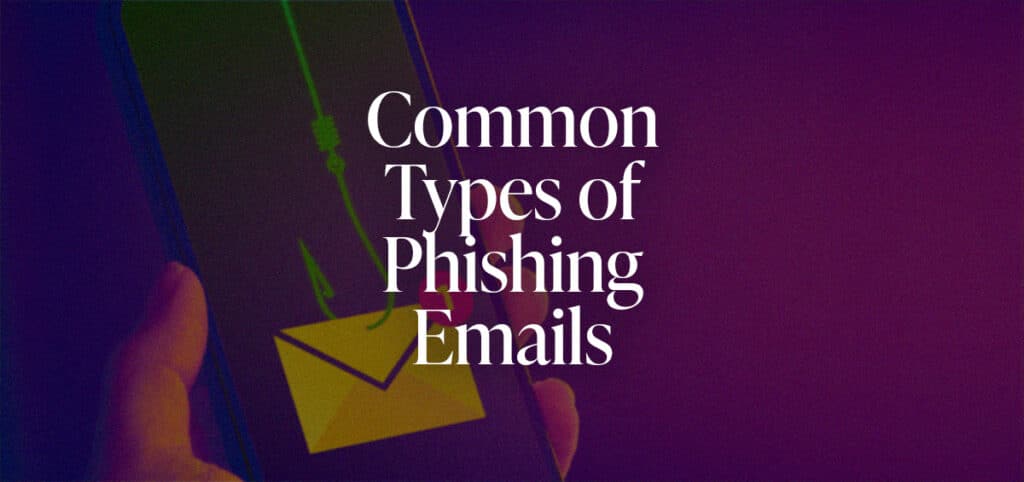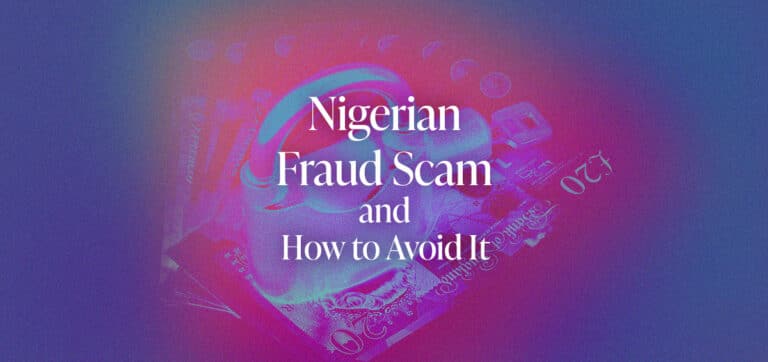
Phishing emails are one of the most common forms of cyber fraud used by scammers to trick people into revealing personal information, such as passwords and banking details. These emails often appear to come from legitimate organisations, making them difficult to spot. Falling victim to a phishing scam can lead to financial loss, identity theft, and unauthorised access to online accounts.
In this guide, we’ll explore the most common types of phishing emails and share practical tips to help you protect yourself.
What Are Phishing Emails?
Phishing emails are fraudulent messages sent by scammers to deceive recipients into providing sensitive information. These emails often contain links to fake websites or attachments designed to steal login credentials, bank details, or other personal information.
To learn more about phishing and how it works, check out our What is Phishing? article.
According to the National Cyber Security Centre (NCSC), phishing attacks continue to be a significant threat, targeting individuals, businesses, and charities alike. Younger people are particularly at risk, as scammers frequently exploit digital platforms. Learn more about common phishing emails and other scams targeting younger people.
Common Examples of Phishing Emails
It can be difficult to spot phishing emails as scammers mimic legitimate organisations. Below are some of the most common email scams to watch out for:
Fake Bank Notifications
Scammers pose as banks, claiming there has been suspicious activity on your account and urging you to take immediate action.
Example: “Your account has been compromised. Please click here to verify your login credentials.”
Delivery Service Scams
These emails pretend to be from delivery companies like Royal Mail or DHL, requesting payment for customs fees or undelivered packages.
Example: “Your package is being held due to unpaid charges. Pay £2.99 to release it.”
Fake Tax Refunds or Penalty Notices
Fraudsters impersonate HMRC, promising tax refunds or warning of penalties to trick victims into providing their bank details.
Example: “You are eligible for a tax refund of £500. Click here to claim.”
Account Verification Requests
Scammers send fake emails claiming to be from services like PayPal, Amazon, or Netflix, warning that your account will be suspended unless you verify your details.
Example: “Your Netflix account will be deactivated in 24 hours. Confirm your details now.”
Spear Phishing Attacks
Unlike general phishing scams, spear phishing is a more targeted form of attack. Scammers research their victims and send personalised emails that appear to come from trusted sources, such as colleagues, managers, or business partners.
Example: “Hi [Your Name], I need you to process an urgent payment for a new supplier. Please see the attached invoice and confirm once done.”
These scams are particularly dangerous as they bypass standard phishing filters and appear highly credible.
For a deeper understanding of spear phishing, check out our What is Spear Phishing? article.
How to Protect Yourself From Phishing Emails
Cybercriminals continuously evolve their tactics, making it essential to stay vigilant. Here’s how you can protect yourself from phishing scams:
Verify the Sender’s Email Address
Always check the sender’s email address carefully. Scammers often use addresses that look legitimate but contain subtle misspellings or extra characters.
Avoid Clicking on Links in Unsolicited Emails
Hover over any links in an email before clicking to preview the URL. If the link looks suspicious or doesn’t match the sender’s claim, avoid clicking on it.
Enable Two-Factor Authentication (2FA)
Activate 2FA for all essential accounts, such as banking, email, and social media. This adds an extra security layer by requiring a second form of verification, such as a text message code.
Regularly Update Passwords and Use a Password Manager
Use strong, unique passwords for each account. A password manager can help generate and store them securely.
Be Cautious of Urgent Language
Phishing emails often use scare tactics, such as threatening account suspension or legal action. If an email tries to pressure you into acting quickly, this is a good indication that something is wrong. Ignore the pressure and take time to check that the sender is legitimate, and use official emails and phone numbers found on their legitimate websites.
For more guidance on protecting yourself, check out the NCSC’s guide on avoiding phishing attacks.
To stay ahead of new phishing scams and other cyber fraud threats, read our latest report: Fraud Trends 2024: How to Stay Safe.
What to Do If You’ve Fallen Victim to a Phishing Email
If you suspect you’ve been targeted by a phishing scam, taking immediate action can minimise the damage:
Change All Affected Passwords Immediately
If you’ve entered login credentials on a fraudulent site, update your password immediately across all affected accounts.
Contact Your Bank or Financial Institution
If you’ve shared financial details, notify your bank or credit card provider. They can monitor for fraudulent activity and block unauthorised transactions.
Report the Phishing Email to Authorities
Forward suspicious emails to report@phishing.gov.uk or report the scam to Action Fraud.
Monitor Your Accounts for Unusual Activity
Keep an eye on your bank statements, email activity, and social media accounts for any unusual transactions or changes.
Choose CEL Solicitors to Recover Your Money
If you’ve lost money due to a phishing scam, CEL Solicitors can help you recover your funds. Our expert fraud recovery team has helped countless victims reclaim their losses.
Real-Life Case Study
One of our clients, a widowed grandfather, was targeted by a phishing scam. The fraudster posed as a representative from his bank and convinced him to reveal personal information, including his bank account details. As a result, the client lost a significant portion of his life savings. Our legal team took swift action, helping him recover £21,000 through our fraud recovery services.
At CEL Solicitors, we operate on a no-win, no-fee basis, ensuring you receive expert legal support without financial risk.
If you’ve been targeted by a phishing scam, contact CEL Solicitors today for expert advice and support.


